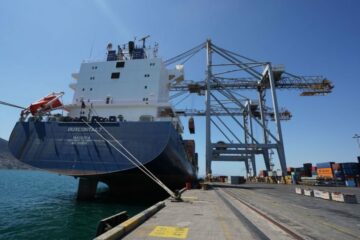
Picture this common procurement issue: Five procurement teams within the same company are independently sourcing an identical part from the same supplier. None of the teams are aware of the others’ plans, and they all end up securing the part for vastly different prices because of a lack of data visibility and communication. The result? A significant price disconnect that could potentially cost the company thousands, if not millions, more dollars than it should. If this scenario sounds familiar, you’ve likely fallen victim to the “decision abyss” — the disconnect between engineering and product design, supply chain planning and procurement within organizations that hinders quick, informed decision-making and visibility.
However, you’re not alone when it comes to data visibility issues across organizations. Data can be difficult to manage and utilize — the decision abyss is a common problem. A full 99% of companies Talend surveyed recognize that data are crucial for success, but 97% face challenges in using data effectively, and a third aren’t even using data to make decisions. The reasons companies struggle leveraging data to drive informed decision-making vary — some point to poor-quality data, whereas others acknowledge a reliance on manual processes.
While many industries have undergone a significant digital transformation to improve workflows and lower costs, that is not the case for most supply chain and procurement professionals, who are left to the mercy of disconnected software tools, utilizing spreadsheets to try and form actionable insights from complicated and disjointed data. Too many companies fall into the decision abyss when it comes to their supply chain, especially their sourcing and procurement functions.
Understanding the Decision Abyss
Understanding the decision abyss necessitates recognizing that procurement, supply chain, and product teams are meant to work together seamlessly across the organization and share information to reach their common organizational goals. However, the reality is often far from this ideal, with 64% of supply chain professionals still relying on Excel for direct sourcing management and only 35% of companies using AI in their business.
The challenges of using spreadsheets like Excel to manage direct sourcing are two-fold. First, the lack of a common language among separate functions requires data to be contextualized for universal understanding — a benefit Excel lacks. Second, using fragmented spreadsheets creates organizational siloes, blocking the smooth flow of information among teams. Teams tasked with a common goal, like reducing cost or ensuring supply continuity, must have the ability to share and leverage all their data to make a unified and intelligent decision.
Navigating Today’s Pressures with Yesterday’s Tools
Following global supply chain disruptions from 2021 onward, companies have turned more attention to supply chain issues plaguing bottom lines. While supply chains currently appear more stable than they have in recent times, they are still fragile and constantly at risk as geopolitical tensions escalate at a pace that outstrips the capabilities of traditional spreadsheets and manual processes. For instance, increasing U.S.–China tensions are compelling companies to rethink and diversify their suppliers elsewhere to remain resilient — a strategic shift that requires access to timely data for quick decision-making.
We’re also seeing shifts in lead times that require real-time insight so teams can quickly adjust their sourcing strategies to mitigate further supply disruption. For example, when the Israel–Hamas war erupted, heads of supply chain and procurement needed to immediately understand which suppliers and parts were impacted across their entire company. In instances like these, where teams within an organization independently use separate spreadsheets without effective communication or information sharing, it is impossible to gain this visibility and be able to act proactively to find alternate suppliers and parts when needed.
How to Bridge the Decision Abyss
Supply chain and procurement leaders can solve fragmentation problems and related issues by leveraging advanced technologies such as AI automation, data aggregation, and contextualization.
If organizations establish comprehensive data visibility across internal operations and the broader data ecosystem with AI software, contextualized data can provide timely, actionable insights and bridge the decision abyss. By unifying and utilizing data across relevant teams, companies get a single source of truth for decision-making, plus advanced visibility into how parts and materials can be tied to finished goods, with a better, more accurate match on what can be produced with what should be produced.
When equipped with these advanced capabilities, procurement gains a clear understanding of how each component, including price and inventory fluctuations, can impact an organization’s top and bottom line. Utilizing AI intelligence, sourcing managers can optimize costs during negotiations with suppliers while teams receive real-time alerts about potential risk exposure related to commodity parts and materials before disruptions unfold. This invaluable information empowers engineering and product teams to evaluate supplier health and model how key components affect the cost structure of a product at the early stages of the design process.
A 2021 Kearney study showed that leading companies with strong procurement partnerships across the organization generated nearly two times more total shareholder return, contributing 200 basis points more to the core corporate profitability measure EBITDA from third-party spend and rebounding three times stronger post-COVID-19.
Generally, AI tools lead to substantial enhancements in operational efficiencies. Once freed from the hassles of spreadsheet management and manual, time-consuming workflows, procurement teams can focus on more strategic tasks.
The Barriers to Bridging the Decision Abyss
A common obstacle to bridging the decision abyss is the inability to start, or “organizational inertia,” which is driven by the fear of the unknown journey, its duration, and the potential challenges along the way. Leadership’s reluctance to initiate change is deeply ingrained because sourcing and procurement teams have traditionally followed common processes for decades.
According to McKinsey research, 61% of manufacturing executives report decreased costs, and 53% report increased revenues as a direct result of introducing AI in the supply chain. This shift isn’t just a tech upgrade; it’s an empowering journey allowing teams to boost efficiency and make a more significant strategic impact within the organization.
In the face of the decision abyss, the path forward is clear. It’s a call to action for supply chain and procurement leaders to demand better software tools to usher in an era of enhanced decision intelligence. It’s not too late to start transforming your organization with AI. Failure to act now brings the risk of being trapped in a decision abyss, whereas organizations quick to adopt AI-powered platforms will leap ahead with optimal business outcomes and a competitive advantage.
Keith Hartley is CEO of LevaData.
- SEO Powered Content & PR Distribution. Get Amplified Today.
- PlatoData.Network Vertical Generative Ai. Empower Yourself. Access Here.
- PlatoAiStream. Web3 Intelligence. Knowledge Amplified. Access Here.
- PlatoESG. Carbon, CleanTech, Energy, Environment, Solar, Waste Management. Access Here.
- PlatoHealth. Biotech and Clinical Trials Intelligence. Access Here.
- Source: https://www.supplychainbrain.com/blogs/1-think-tank/post/38761-bridging-the-decision-abyss
- :is
- :not
- :where
- $UP
- 200
- 2021
- a
- ability
- Able
- About
- access
- accurate
- acknowledge
- across
- Act
- Action
- adjust
- adopt
- advanced
- ADvantage
- affect
- aggregation
- ahead
- AI
- AI-powered
- alerts
- All
- Allowing
- alone
- along
- also
- among
- an
- and
- appear
- ARE
- AS
- At
- attention
- Automation
- aware
- barriers
- basis
- BE
- because
- before
- being
- benefit
- Better
- between
- blocking
- boost
- Bottom
- BRIDGE
- bridging
- Brings
- broader
- business
- but
- by
- call
- call to action
- CAN
- capabilities
- case
- ceo
- chain
- chains
- challenges
- change
- clear
- comes
- commodity
- Common
- Communication
- Companies
- company
- compelling
- competitive
- complicated
- component
- components
- comprehensive
- constantly
- continuity
- contributing
- Core
- Corporate
- Cost
- Costs
- could
- creates
- crucial
- Currently
- data
- decades
- decision
- Decision Making
- decisions
- decreased
- Demand
- Design
- design process
- different
- difficult
- direct
- disconnected
- Disruption
- disruptions
- diversify
- dollars
- drive
- driven
- duration
- during
- each
- Early
- EBITDA
- ecosystem
- Effective
- effectively
- efficiencies
- efficiency
- empowering
- empowers
- end
- Engineering
- enhanced
- enhancements
- ensuring
- Entire
- equipped
- Era
- escalate
- especially
- establish
- evaluate
- Even
- example
- Excel
- executives
- Exposure
- Face
- Failure
- Fall
- Fallen
- familiar
- far
- fear
- Find
- First
- five
- flow
- fluctuations
- Focus
- followed
- For
- form
- Forward
- fragmentation
- fragmented
- from
- from 2021
- full
- functions
- further
- Gain
- Gains
- generated
- geopolitical
- get
- Global
- goal
- Goals
- goods
- Have
- heads
- Health
- hinders
- How
- However
- HTTPS
- IBM
- ideal
- identical
- if
- immediately
- Impact
- impacted
- impossible
- improve
- in
- inability
- Including
- increased
- increasing
- independently
- industries
- inertia
- information
- informed
- ingrained
- initiate
- insight
- insights
- instance
- instances
- Intelligence
- Intelligent
- internal
- into
- introducing
- invaluable
- inventory
- issue
- issues
- IT
- ITS
- journey
- jpg
- just
- Key
- Lack
- language
- Late
- lead
- leaders
- leading
- Leap
- left
- Leverage
- leveraging
- like
- likely
- Line
- lines
- lower
- make
- manage
- management
- Managers
- manual
- manufacturing
- many
- Match
- materials
- McKinsey
- meant
- measure
- millions
- Mitigate
- model
- more
- most
- must
- nearly
- needed
- negotiations
- None
- now
- obstacle
- of
- often
- on
- once
- only
- operational
- Operations
- optimal
- Optimize
- or
- organization
- organizational
- organizations
- Others
- outcomes
- Outlook
- outstrips
- Pace
- part
- partnerships
- parts
- path
- planning
- plans
- Platforms
- plato
- Plato Data Intelligence
- PlatoData
- plus
- Point
- points
- post-COVID-19
- potential
- potentially
- price
- Prices
- Problem
- problems
- process
- processes
- procurement
- Produced
- Product
- product design
- professionals
- profitability
- protection
- provide
- Quick
- quickly
- reach
- real-time
- Reality
- reasons
- receive
- recent
- recognize
- recognizing
- reducing
- related
- relevant
- reliance
- reluctance
- relying
- remain
- report
- require
- requires
- research
- resilient
- result
- return
- revenues
- Risk
- s
- same
- scenario
- seamlessly
- Second
- securing
- seeing
- separate
- Share
- share information
- shareholder
- sharing
- shift
- Shifts
- should
- showed
- significant
- single
- smooth
- So
- Software
- SOLVE
- some
- Source
- Sourcing
- spend
- Spreadsheet
- stable
- stages
- start
- Still
- Strategic
- strategies
- strong
- stronger
- structure
- Struggle
- substantial
- success
- such
- supplier
- suppliers
- supply
- supply chain
- Supply Chain Planning
- Supply chains
- surveyed
- tasks
- teams
- tech
- Technologies
- tensions
- than
- that
- The
- their
- These
- they
- Third
- third-party
- this
- thousands
- three
- Tied
- time-consuming
- timely
- times
- to
- today’s
- together
- too
- tools
- top
- Total
- traditional
- traditionally
- transforming
- trapped
- truth
- try
- Turned
- two
- two-fold
- undergone
- understand
- understanding
- unified
- Universal
- unknown
- upgrade
- use
- usher
- using
- utilize
- Utilizing
- Victim
- visibility
- war
- Way..
- were
- What
- when
- whereas
- which
- while
- WHO
- will
- with
- within
- without
- Work
- work together
- workflows
- Your
- zephyrnet












